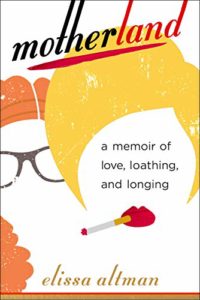
Growing up in Forest Hills, I didn’t have a whole lot of opportunity in my young life to get involved in the act of growing things; when I was about eight, I attempted the thing that you do with the avocado pit and the toothpicks, where you suspend it over a bowl of water and you eventually wind up with a tree. After a week, I wound up with a slightly slimy avocado pit stuck with toothpicks, suspended over an empty bowl, because the water had evaporated while I went off every day after school to play with my friends and ride my bike.
My mother discovered at one point that she had an affinity for a particular houseplant called, as luck would have it, a Wandering Jew; it spat shooters all over the nice white Parson’s table where she had placed it in the living room, and where it would get good morning light. Distraction being what it is, she eventually forgot to water it for a few days, which turned into a month, and then it was dead, and she was still surprised.
So when I left Manhattan ten years ago to move up to northern Connecticut, to a town of 3,500 people and one flashing traffic light, I didn’t exactly think that I was cut out for planting and hoeing, raking, watering, and turning the soil in our perfectly flat, sun-dappled backyard acreage. But strange things happen when you move to the country and you discover that, for one thing, growing a good portion–if not all–of your food, is dirt cheap, and for another, you are not at all obligated to spray it with those chemicals that result in tomatoes the size of basketballs. You can just do your planting and take care of things naturally, and you’ll wind up with some amazing, delicious, and often beautiful food. After one season of planting the usual zucchini and tomatoes successfully, I was hooked, and the following year, we built four 10′ x 4′ garden boxes, along with two 4 x 4 squares that we would reserve for more vertical crops, like brussels sprouts, and even corn, which I assumed would grow as high as an elephant’s eye, the way it did in
Field of Dreams.
I bought a straw hat that made me look like a cross between a thumb tack and Lillian Gish in
The Whales of August. My Dad bought us a gas-powered rototiller and made lawn tractor jokes. Sue’s 81 year old mom, who grew up on a small farm in nearby Burlington, told us exactly what to plant where, and then she’d push-mow the rest of the yard, have a stiff vodka and tonic to revive herself, and go home.
By mid-July, we could have fed ourselves, the entire county, and
The King Family. By August,I was stuffing zucchini blossoms with goat cheese, battering and pan-frying them virtually every night; eventually, the cold weather-favoring greens like kale, chard, and mustard, came in, and by September, we discovered that our neighbors were coming over at three in the morning to pilfer what they could, which was just totally fine with us.
What were we thinking?
Probably that bigger is better, and that a big garden is always better than a small one. This is just another obvious manifestation of a problem that exists everywhere (big SUVs, big houses, big burgers, big portions, big mortgages, big credit, big debt, big stuff, etc, etc, etc). We wanted to grow our own organic vegetables, which is totally admirable. We just wanted to grow too many of them.
Fast forward 8 years. This is my garden right now, after 25 days (out of 30) of heavy rain, and no sun. It looks like what would have happened had the Beales grown their own at
Grey Gardens. We made the assumption that a smaller garden wouldn’t need as much upkeep as a bigger garden. Wrong. Again.

What’s growing on the trellis? NOTHING! Note dead juniper in background.

Slugs are definitely vegetarians.
We live on a smaller piece of land now and so our garden reflects both property size, the fact that there are two of us, and that we’re not fans of waste. I expect that there won’t be a heck of a lot of waste this year, because we have no vegetables. Lots of greenery and slugs, but alas, no vegetables. Okay, maybe some leeks, which aren’t ready yet, and the 2 Italian heritage pole beans growing amidst masses of leafiness. One for each of us. How nice. How shall we have them: steamed or sauteed?

Two beans for dinner.
Needless to say, I was feeling a little peevish when my colleague and friend Edwin showed up in my office the other morning with a packed bagful of the most magnificent broad beans I’ve ever seen. Edwin’s neighbor, who lives in a lovely smallish house on a lovely smallish street, has a smallish yard which he has filled, fence-to-fence, with gorgeous garden boxes packed with lettuce, cabbage, herbs, tomatoes, rhubarb, and much more. At lunchtime, Edwin went home and brought me back another bagful of stuff: basil, rhubarb, and lettuce.

A stunning garden, lush and orderly.

It goes crazy in a tidy way.
“I don’t know what to do with all this stuff–” he said. “It’s growing as quickly as I can harvest it, and the owner is off in Portugal for a month. Any ideas?”
I thought back to my own garden, and the issues of envy; I wondered why the owner had planted so much if he knew that he likely wouldn’t be able to eat all of it, and I thought about issues of size. And then it hit me: this man feeds as many of his friends and neighbors as likely want his vegetables. And as for size, his gorgeous garden was a perfect example of a small space tended lovingly and with care, resulting in more fruits of his labor than we had in a garden four times its size back at our old house. So maybe size doesn’t really count after all; it’s all about the love.
I looked at the beans and I said to Edwin, “just keep it simple.” And that night, I did.
Pan-Braised Broad Beans with Poached Eggs and Toasted Breadcrumbs
Serves 2 with leftovers
While I love the
idea of broad beans–gigantic pods resembling favas, that are filled with toothsome peas and are all edible–I was never in love with them. Last summer, my neighbor (
the one with the chickens) introduced me to some that she’d grown from seeds that had been dried the previous year, and that were related to a batch that her great grandfather had brought over from Italy. Braised in olive oil with a handful of garlic, a few minced shallots, and salt and pepper, they’re remarkable. Topped with poached eggs and breadcrumbs, they’re an entirely different beast.
2-3 pounds fresh broad beans
1/4 cup extra virgin olive oil
3 cloves garlic, peeled and minced
2 shallots, peeled and sliced
leftover roasted potatoes (optional)
1/2 cup water or dry white wine
4 eggs
1/2 cup fresh bread crumbs from leftover or day-old bread
salt and pepper, to taste

Fresh broad beans
1. Rinse the beans lightly in water, remove tops and tails, and dry well.

Saute until bright green and tender, but don’t cook until mushy.
2. Heat oil in a large saute pan or wok set over medium high heat until shimmering, and add the garlic and shallots (I included some leftover roasted potatoes). Saute until translucent, add the beans, and half a cup of water or wine. Reduce the heat, top with a cover set askew over the pan, and let simmer for 6-8 minutes, until bright green and cooked through.
3. Meanwhile, poach the eggs, and toast the bread crumbs slowly in a bit of olive oil.

Poach carefully.

Toast bread crumbs.

Make sure they don’t burn.
4. Serve the beans warm, topped with the poached eggs, the bread crumbs, coarse salt, and a heavy hand with the pepper mill.

Serve with a glass of cold, dry white wine.

Bliss.
















